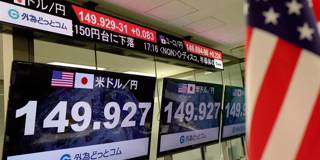Many argue that Japan’s attempts to boost the exchange rate are being thwarted by its own central bank, which remains committed to ultra-loose monetary policy. But the exchange rate is not part of the Bank of Japan’s mandate, and the main drivers of the yen’s depreciation are outside Japanese policymakers’ control.
TOKYO – On September 22, Japan’s government purchased yen on the foreign-exchange market for the first time since 1998. The finance ministry was attempting to stem the yen’s rapid slide, and for a while, the $20 billion intervention seemed to be working: the yen’s value rose from nearly ¥146 per US dollar to slightly less than ¥141. But not long after the intervention ended, the yen began to backslide. The dollar-yen rate remained below ¥146, the intervention point, for almost three weeks, before falling to ¥150 on October 20.

TOKYO – On September 22, Japan’s government purchased yen on the foreign-exchange market for the first time since 1998. The finance ministry was attempting to stem the yen’s rapid slide, and for a while, the $20 billion intervention seemed to be working: the yen’s value rose from nearly ¥146 per US dollar to slightly less than ¥141. But not long after the intervention ended, the yen began to backslide. The dollar-yen rate remained below ¥146, the intervention point, for almost three weeks, before falling to ¥150 on October 20.